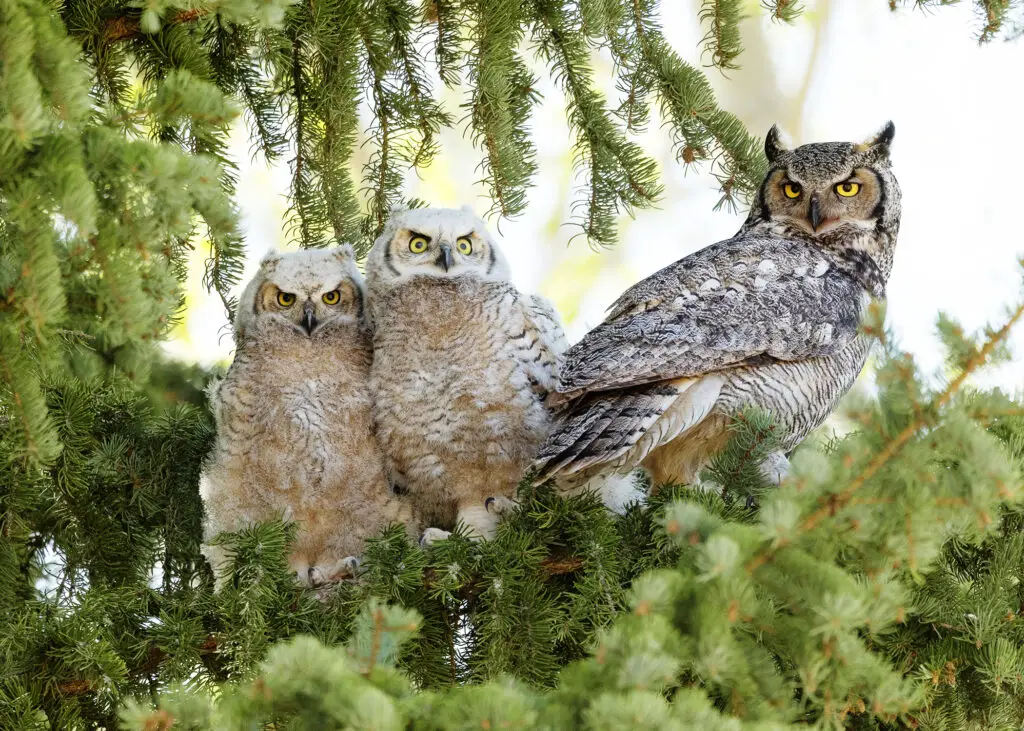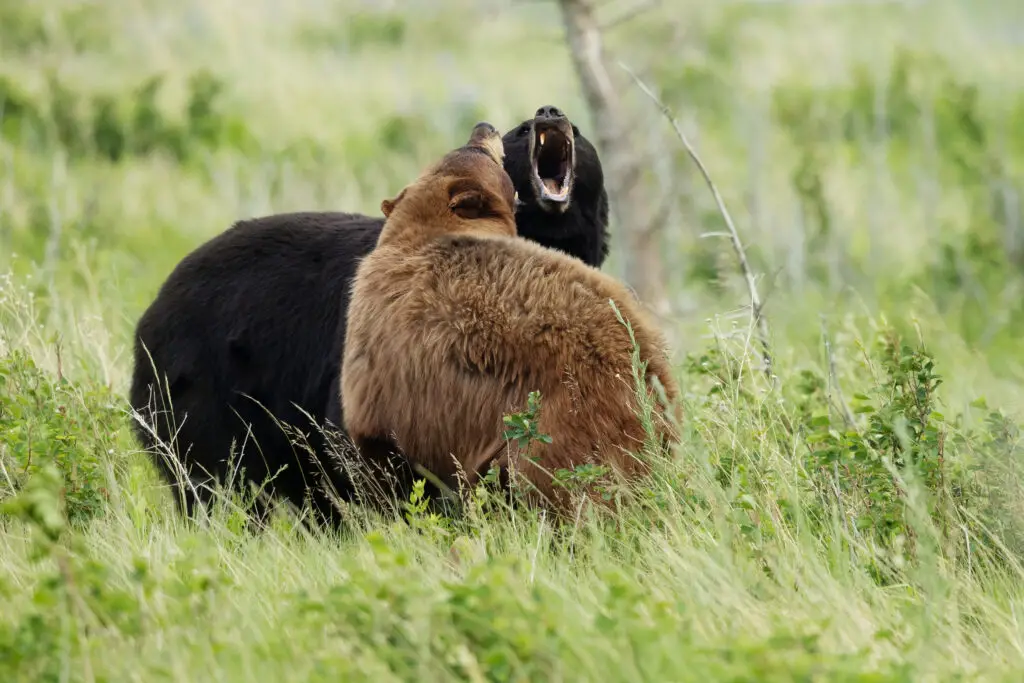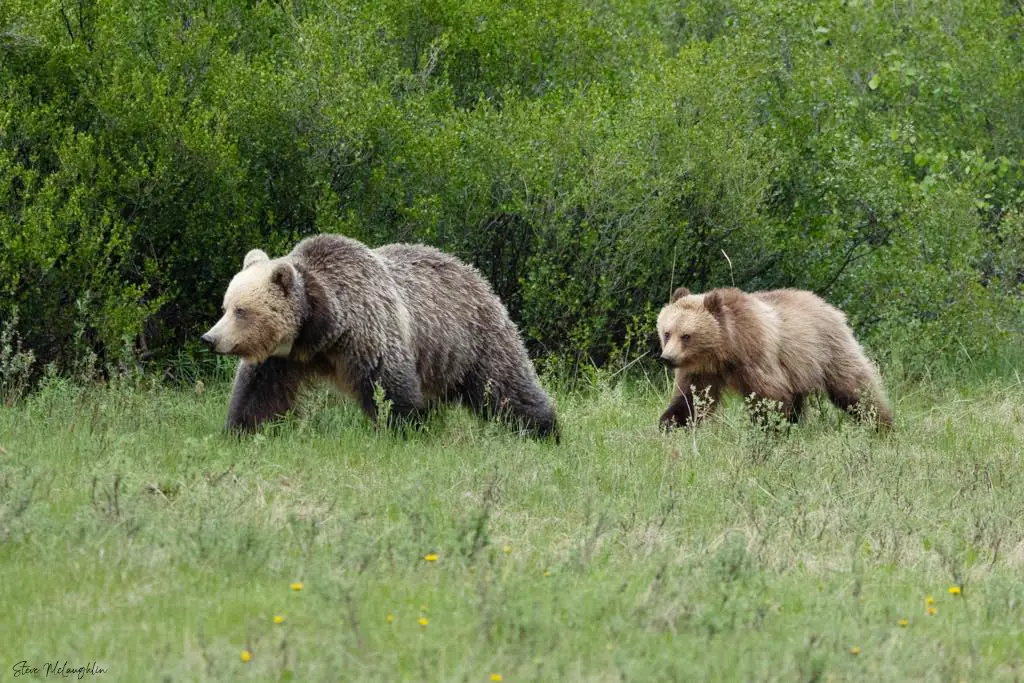When mirrorless cameras first came out, they were understandably pretty clunky. Some of the early criticisms included their shortened battery life, stuttering electronic viewfinders, and lagging autofocus compared to the DSLR’s we were used to.
But like any technology, they’ve come a long way! When we switched from from Canon DSLR’s, the EOS R system definitely felt like an upgrade for a few different reasons.
If you’re looking for Canon mirrorless image samples, keep scrolling or check out our wildlife photography gallery!
Table of Contents
Advantages of Mirrorless Cameras for Wildlife Photography
Compact and Lightweight
Losing the mirror made cameras smaller, lighter and more compact than DSLRs. This makes them more portable and convenient for travel and everyday use.
Mirrorless cameras are a great choice for photographers who want to minimize the weight and bulk of their gear.
While the lenses can be heavy – especially the long telephoto ones used in wildlife photography – any weight reduction can really make a big difference when you’re carrying a backpack through the bush and trekking on uneven terrain.
Live View and Electronic Viewfinder (EVF)
Mirrorless cameras use an electronic viewfinder or the rear LCD screen for composing shots. This means you see a live view of the image you’re about to capture, making it easier to see the exposure, white balance, and other settings in real-time.
By comparison, optical viewfinders show you the scene through a piece of glass, with no additional image processing. You have to pre-visualize what the shot will look like given your camera settings.
Mirrorless cameras make it so much easier for new photographers to learn things like the exposure triangle and other effects that changing your camera settings can have.
Fast and Accurate Autofocus
When mirrorless cameras first came out, the autofocus speed was a concern. When compared to the older, more perfected DSLR systems often the autofocus just couldn’t measure up.
But mirrorless cameras have now improved to the point where autofocus systems often outperform DSLRs in terms of speed and accuracy. Many mirrorless cameras offer features like face and eye detection, making it easier to capture sharp, well-focused images.
Animal Eye Detection
Canon was the first to come out with dedicated animal eye detection with the mirrorless Canon R5 and R6 models. (At Mountains and Treasures, we use two Canon R6’s.) On some models you can even switch between what kind of eyes the camera should prioritize: human, animal, or neither. Typically the eye detection even works with birds.
Eyes are of course the most important part of any living subject to focus on! The animal eye detection can make a huge difference in the number of keeper shots you can get in a split second moment.
Focus Peaking
Focus peaking is another fairly recent development that was introduced with newer DSLR’s. It now comes standard with all mirrorless cameras. Focus peaking outlines the parts of the image that are in focus using a red or white line to assist you in capturing sharp manual focus.
Being able to use focus peaking in the electronic viewfinder (rather than just the rear LCD screen) is a big improvement over DSLR’s as well. If you’re more of a manual lens type of person you’ll love the extra bit of help your camera gives your eyes!
Silent Shooting
The absence of a mirror mechanism in mirrorless cameras allows for totally silent shooting. Wildlife photographers already have a tough time getting within close range of animals without scaring them away with the shutter. If you’re used to DSLR’s you know how loud the mirror can be when it “clacks” out of the way of the sensor!

Image taken using a Canon R6 with RF 100-500mm lens.
4K Video and Advanced Video Features
Mirrorless cameras often excel in video recording capabilities. Many offer 4K video recording and advanced video features like focus peaking, zebra stripes, and adjustable frame rates. This is partly just from being newer cameras to the market, but makes them a popular choice for videographers and content creators.
Seamless Connectivity
Mirrorless cameras are equipped with built-in Wi-Fi, Bluetooth, and NFC connectivity, making it easy to transfer images to your mobile device, control the camera remotely, or quickly share your photos on social media. Photographers coming from older DSLR models will greatly appreciate the added convenience.
Lens Options
Just by virtue of being newer technology, many mirrorless lenses are sharper while also being more compact. While it took each of the camera manufacturers awhile to release a full lens library, mirrorless cameras can now rival DSLR’s in terms of lenses you can choose from. The Canon R system we use now has a native 100-500mm lens plus extender, a 600mm, a 200-800mm, and 24-105mm. Plenty of mid- and higher-end options that are perfect for wildlife and landscapes.

Disadvantages of Mirrorless Cameras for Wildlife Photography
While mirrorless cameras have come a long way, they still have some limitations compared to DSLRs.
Battery Life
Mirrorless cameras have historically suffered from shorter battery life compared to DSLRs. At this point it’s still essential to carry spare batteries on long hikes. Not a bad idea anyway, especially in cold weather.
Lens Incompatibilities
Unfortunately, the newer mirrorless systems use different lens mounts than DSLR systems. That means you’ll have to use an adapter if you want to keep using your old lens collection. Using adapted lenses will always be a bit less fun than using native ones, but it’s nice to have the option.
Memory Cards
Mirrorless cameras typically use SDXC cards instead of the larger CF cards we were used to on older DSLR bodies. Again necessitating that you buy a new set of memory cards.
Conclusion
Mirrorless cameras have so many advantages for wildlife photographers, like live exposure preview, silent shooting modes, image stabilization, and advanced focus tracking features. While there are still some disadvantages, like battery life and needing to invest in new lenses.
For wildlife photographers looking to make the switch or invest in a new camera system, mirrorless cameras are an increasingly compelling option.
Ultimately, if the camera you’re using right now works for you, there’s no sense fixing what isn’t broken! But if you’re getting that major gear lust, try renting a new mirrorless camera in your brand of choice to see what the hype is about.
